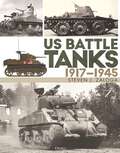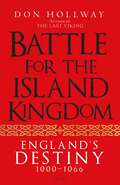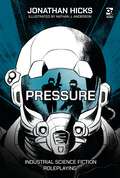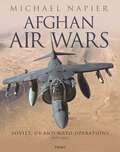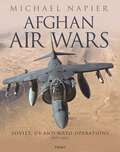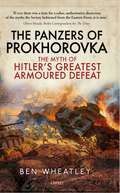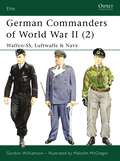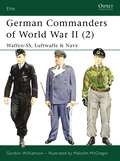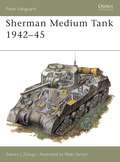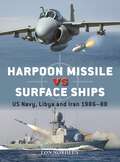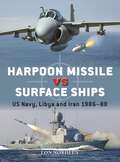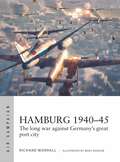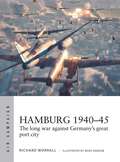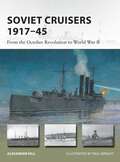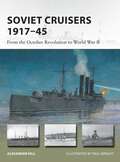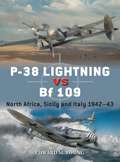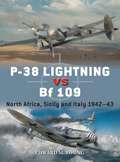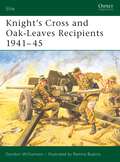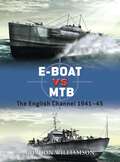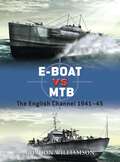- Table View
- List View
US Battle Tanks 1917–1945
by Steven J. ZalogaA comprehensive and detailed illustrated examination of the development and combat performance of US battle tanks from World War I to the end of World War II. In this, the first of two highly illustrated volumes examining the complete history of US Army and US Marine Corps battle tanks, Steven J. Zaloga focuses on the history of the tank in American service from the first experiments with armored vehicles in the early years of the 20th century through to the end of World War II. Expanding on material published in Osprey series including New Vanguard, Campaign, and Duel, US Battle Tanks 1917–1945 explores the concepts and practice of tank development from the Renault FT, through the M4 Sherman to the M26 Pershing. It describes the experiences of the crews who saw combat, the performance of each tank in battle, and how each American armored fighting vehicle compared with the enemy armor it faced, as well as the key lessons learned from combat that led to new concepts and technological breakthroughs.
Battle for the Island Kingdom: England's Destiny 1000–1066
by Don HollwayA rich history of the years leading up to 1066 when Vikings, Anglo-Saxons and Normans vied for the English crown. A tale of loyalty, treason and military might. In a saga reminiscent of Game of Thrones and The Last Kingdom, Battle for the Island Kingdom reveals the life-and-death struggle for power which changed the course of history. The six decades leading up to 1066 were defined by bloody wars and intrigues, in which three peoples vied for supremacy over the island kingdom. In this epic retelling, Don Hollway (The Last Viking) recounts the clashes of Vikings, Anglo-Saxons and Normans, their warlords and their conniving queens. It begins with the Viking Cnut the Great, forging three nations into his North Sea Empire while his Saxon wife Aelfgifu rules in his stead and schemes for England's throne. Her archenemy is Emma of Normandy, widow of Saxon king Aethelred, claiming Cnut's realm in exchange for her hand in marriage. Their sons become rivals, pawns in their mothers' wars until they can secure their own destinies. And always in the shadows is Godwin of Wessex, playing all sides to become the power behind the throne until his son Harold emerges as king of all of England. But Harold's brother Tostig turns traitor, abandons the Anglo-Saxons and joins the army of the last great Viking, Harald Hardrada, where together they meet their fate at the battle of Stamford Bridge. And all this time watching from across the water is William, the Bastard, fighting to secure his own Norman dukedom, but with an eye on the English crown.
Battle for the Island Kingdom: England's Destiny 1000–1066
by Don HollwayA rich history of the years leading up to 1066 when Vikings, Anglo-Saxons and Normans vied for the English crown. A tale of loyalty, treason and military might. In a saga reminiscent of Game of Thrones and The Last Kingdom, Battle for the Island Kingdom reveals the life-and-death struggle for power which changed the course of history. The six decades leading up to 1066 were defined by bloody wars and intrigues, in which three peoples vied for supremacy over the island kingdom. In this epic retelling, Don Hollway (The Last Viking) recounts the clashes of Vikings, Anglo-Saxons and Normans, their warlords and their conniving queens. It begins with the Viking Cnut the Great, forging three nations into his North Sea Empire while his Saxon wife Aelfgifu rules in his stead and schemes for England's throne. Her archenemy is Emma of Normandy, widow of Saxon king Aethelred, claiming Cnut's realm in exchange for her hand in marriage. Their sons become rivals, pawns in their mothers' wars until they can secure their own destinies. And always in the shadows is Godwin of Wessex, playing all sides to become the power behind the throne until his son Harold emerges as king of all of England. But Harold's brother Tostig turns traitor, abandons the Anglo-Saxons and joins the army of the last great Viking, Harald Hardrada, where together they meet their fate at the battle of Stamford Bridge. And all this time watching from across the water is William, the Bastard, fighting to secure his own Norman dukedom, but with an eye on the English crown.
Pressure: Industrial Science Fiction Roleplaying (Osprey Roleplaying)
by Jonathan HicksA science fiction roleplaying game of bringing law and order to the dark and dangerous corners of the universe.Pressure: Industrial Science Fiction Roleplaying is a rules-light, story-focused game of facing the darkness at the heart of humanity's fragile and claustrophobic existence – both on Earth and among the stars. An entirely standalone title, Pressure also develops and expands upon the mechanics and setting introduced in the Those Dark Places roleplaying game. As highly skilled agents of Special Operations Squads, players are tasked with cleaning up after the Corporations – investigating links to organised crime, neutralising rogue weapons research, negotiating with rebel leaders on orbital stations, and hunting down whatever that black-budget excavation team 'awoke' out in the Procyon Sector…The universe is a dangerous and hostile place; the Hypercities and the Deep Black alike hide powerful foes. But you have the tools, the training, and the resources to face these dangers… you hope.
Pressure: Industrial Science Fiction Roleplaying (Osprey Roleplaying)
by Jonathan HicksA science fiction roleplaying game of bringing law and order to the dark and dangerous corners of the universe.Pressure: Industrial Science Fiction Roleplaying is a rules-light, story-focused game of facing the darkness at the heart of humanity's fragile and claustrophobic existence – both on Earth and among the stars. An entirely standalone title, Pressure also develops and expands upon the mechanics and setting introduced in the Those Dark Places roleplaying game. As highly skilled agents of Special Operations Squads, players are tasked with cleaning up after the Corporations – investigating links to organised crime, neutralising rogue weapons research, negotiating with rebel leaders on orbital stations, and hunting down whatever that black-budget excavation team 'awoke' out in the Procyon Sector…The universe is a dangerous and hostile place; the Hypercities and the Deep Black alike hide powerful foes. But you have the tools, the training, and the resources to face these dangers… you hope.
Afghan Air Wars: Soviet, US and NATO operations, 1979–2021
by Michael NapierMichael Napier details the critical role of air power in the skies over Afghanistan, from the ten-year occupation by the USSR in the 1980s through to the US and NATO campaign from 2001 to 2021.US and British forces, strongly supported by air power, invaded Afghanistan in late 2001 in response to the Al Qaida attacks on 9/11. What began as a small-scale operation of 2,500 troops with the limited objective of destroying Al Qaida became ever larger, growing to over 100,000 troops ten years later. This experience matched that of the Soviets after their invasion in late 1979, when they saw a massive increase in resistance by Mujahidin. Afghan Air Wars details how Soviet aircraft including the MiG-21, MiG-23, Su-17 and Su-25, as well as Mi-8 and Mi-24 helicopters supported Soviet offensives in the Panjshir Valley and other regions. Despite these high-octane operations and overwhelming air superiority, Soviet forces eventually withdrew. Some 20 years later, US and NATO air forces were deployed in similar roles. F-15E, F-16, F/A-18, A-10, Mirage, Harrier and Tornado aircraft all saw action in the skies over Afghanistan as did the CH-47 Chinook and AH-64 Apache helicopters. Mike Napier fully details their series of operations in a hostile environment as well as the advent of high-resolution targeting pods and Precision Guided Munitions (PGM) which enabled aircraft to stand off from threat areas and also to deploy their weapons with deadly accuracy. The conflict also saw the groundbreaking introduction of Remotely Piloted Vehicles (RPV) into routine air operations. Afghan Air Wars is richly illustrated with over 240 images – both official photos and privately taken, in-theatre images which have not been previously published. It also includes first-hand accounts by aircrews involved to create a unique and comprehensive picture of the part played by air power over Afghanistan in the last 40 years.
Afghan Air Wars: Soviet, US and NATO operations, 1979–2021
by Michael NapierMichael Napier details the critical role of air power in the skies over Afghanistan, from the ten-year occupation by the USSR in the 1980s through to the US and NATO campaign from 2001 to 2021.US and British forces, strongly supported by air power, invaded Afghanistan in late 2001 in response to the Al Qaida attacks on 9/11. What began as a small-scale operation of 2,500 troops with the limited objective of destroying Al Qaida became ever larger, growing to over 100,000 troops ten years later. This experience matched that of the Soviets after their invasion in late 1979, when they saw a massive increase in resistance by Mujahidin. Afghan Air Wars details how Soviet aircraft including the MiG-21, MiG-23, Su-17 and Su-25, as well as Mi-8 and Mi-24 helicopters supported Soviet offensives in the Panjshir Valley and other regions. Despite these high-octane operations and overwhelming air superiority, Soviet forces eventually withdrew. Some 20 years later, US and NATO air forces were deployed in similar roles. F-15E, F-16, F/A-18, A-10, Mirage, Harrier and Tornado aircraft all saw action in the skies over Afghanistan as did the CH-47 Chinook and AH-64 Apache helicopters. Mike Napier fully details their series of operations in a hostile environment as well as the advent of high-resolution targeting pods and Precision Guided Munitions (PGM) which enabled aircraft to stand off from threat areas and also to deploy their weapons with deadly accuracy. The conflict also saw the groundbreaking introduction of Remotely Piloted Vehicles (RPV) into routine air operations. Afghan Air Wars is richly illustrated with over 240 images – both official photos and privately taken, in-theatre images which have not been previously published. It also includes first-hand accounts by aircrews involved to create a unique and comprehensive picture of the part played by air power over Afghanistan in the last 40 years.
The Panzers of Prokhorovka: The Myth of Hitler’s Greatest Armoured Defeat
by Ben WheatleyThis ground-breaking new study of the battles of Kursk and Prokhorovka will transform our understanding of one of the most famous battles of the Second World War, widely mythologized as the largest tank battle in history.'If ever there was a time for a sober, authoritative dissection of the myths the Soviets fashioned from the Eastern Front, it is now.' - Oliver Moody, Berlin Correspondent for The Times Today in Russia there are three official sacred battlefields: Kulikovo, where the Mongols were defeated in 1380; Borodino, where Russian troops slowed Napoleon's Grande Armée before Moscow in 1812; the third is Prokhorovka. This is widely described as the most critical tank battle of the Second World War, which saw the annihilation of Hitler's elite Panzer force in the largest armoured clash in history and left Hitler with no alternative but to halt Germany's offensive against the Kursk salient. Victory, on 12 July 1943, at Prokhorovka over Hitler's vaunted SS troops has traditionally been described as a turning point in the Second World War. The Panzers of Prokhorovka challenges this narrative. The battle was indeed an important Soviet victory, but a very different one to that described above. Based on ground-breaking archival research and supported by hitherto unpublished images of the battlefield, Ben Wheatley argues that German armoured losses were in fact negligible and a fresh approach is required to understand Prokhorovka. As we reach the 80th anniversary of the battles of Kursk and Prokhorovka in 2023, The Panzers of Prokhorovka tackles the many myths that have built up over the years, and presents a new analysis of this famous engagement.
The Panzers of Prokhorovka: The Myth of Hitler’s Greatest Armoured Defeat
by Ben WheatleyThis ground-breaking new study of the battles of Kursk and Prokhorovka will transform our understanding of one of the most famous battles of the Second World War, widely mythologized as the largest tank battle in history.'If ever there was a time for a sober, authoritative dissection of the myths the Soviets fashioned from the Eastern Front, it is now.' - Oliver Moody, Berlin Correspondent for The Times Today in Russia there are three official sacred battlefields: Kulikovo, where the Mongols were defeated in 1380; Borodino, where Russian troops slowed Napoleon's Grande Armée before Moscow in 1812; the third is Prokhorovka. This is widely described as the most critical tank battle of the Second World War, which saw the annihilation of Hitler's elite Panzer force in the largest armoured clash in history and left Hitler with no alternative but to halt Germany's offensive against the Kursk salient. Victory, on 12 July 1943, at Prokhorovka over Hitler's vaunted SS troops has traditionally been described as a turning point in the Second World War. The Panzers of Prokhorovka challenges this narrative. The battle was indeed an important Soviet victory, but a very different one to that described above. Based on ground-breaking archival research and supported by hitherto unpublished images of the battlefield, Ben Wheatley argues that German armoured losses were in fact negligible and a fresh approach is required to understand Prokhorovka. As we reach the 80th anniversary of the battles of Kursk and Prokhorovka in 2023, The Panzers of Prokhorovka tackles the many myths that have built up over the years, and presents a new analysis of this famous engagement.
German Commanders of World War II: Waffen-SS, Luftwaffe & Navy (Elite)
by Gordon WilliamsonThis second of two selections of Germany's World War II field commanders summarizes the careers, and illustrates the appearance, of 26 men who rose to prominence in the Waffen-SS, Kriegsmarine and Luftwaffe. The subjects range from the commanders-in-chief and generals to younger officers whose fame and promotions were earned in combat on land, at sea and in the air. Some were dedicated supporters of the Nazi regime; others were motivated simply by patriotism and their military training. Every commander has an individual colour portrait expertly drawn by the respected World War II illustrator Malcolm McGregor.
German Commanders of World War II: Waffen-SS, Luftwaffe & Navy (Elite)
by Gordon WilliamsonThis second of two selections of Germany's World War II field commanders summarizes the careers, and illustrates the appearance, of 26 men who rose to prominence in the Waffen-SS, Kriegsmarine and Luftwaffe. The subjects range from the commanders-in-chief and generals to younger officers whose fame and promotions were earned in combat on land, at sea and in the air. Some were dedicated supporters of the Nazi regime; others were motivated simply by patriotism and their military training. Every commander has an individual colour portrait expertly drawn by the respected World War II illustrator Malcolm McGregor.
Sherman Medium Tank 1942–45 (New Vanguard)
by Steven J. ZalogaThe M4 Sherman tank was the mainstay of the Western allies between 1942 and 1945. Fast and modern it was better than most of the tanks Britain had to offer. The American Chief of Staff claimed in November 1943 that it had been hailed widely as 'the best tank on the battlefield today'. However, by the time of the Normandy invasion of June 1944 this was not the case. The new heavy tanks being produced by the Germans were able to outclass the Sherman in both armour and armament. This title describes the development and operational use of the Sherman medium tank throughout World War II and beyond.
Sherman Medium Tank 1942–45 (New Vanguard)
by Steven J. ZalogaThe M4 Sherman tank was the mainstay of the Western allies between 1942 and 1945. Fast and modern it was better than most of the tanks Britain had to offer. The American Chief of Staff claimed in November 1943 that it had been hailed widely as 'the best tank on the battlefield today'. However, by the time of the Normandy invasion of June 1944 this was not the case. The new heavy tanks being produced by the Germans were able to outclass the Sherman in both armour and armament. This title describes the development and operational use of the Sherman medium tank throughout World War II and beyond.
Harpoon Missile vs Surface Ships: US Navy, Libya and Iran 1986–88 (Duel #134)
by Lon NordeenAn illustrated study of premier US anti-ship missile, the AGM/RGM-84 Harpoon, and its 1986 and '88 uses against Libyan and Iranian naval vessels.In this study, defence technology expert Lon Nordeen details the role played by the Harpoon missile in two Cold War flare-ups in the 1980s. The Harpoon was the first tactical anti-ship missile developed by the US Navy to provide a counter to the anti-ship missiles exported around the world by the Soviet Union and China. It was deployed on ships, aircraft, submarines and land vehicles and soon became the most widely used anti-ship missile system in the West, with 7,000+ having been produced since 1977, operated by the military forces of more than 30 nations. This exciting book explores the engagements of the Harpoon by the US Navy against its Libyan and Iranian adversaries, using original photographs and specially commissioned artwork to examine the naval systems and weapons employed by both counterparts. Drawing upon interviews with the US Navy A-6 Intruder crews that deployed the AGM084 variant of the Harpoon in 1986 and 1988, the author brings unique insight to his examination of these fascinating duels.
Harpoon Missile vs Surface Ships: US Navy, Libya and Iran 1986–88 (Duel #134)
by Lon NordeenAn illustrated study of premier US anti-ship missile, the AGM/RGM-84 Harpoon, and its 1986 and '88 uses against Libyan and Iranian naval vessels.In this study, defence technology expert Lon Nordeen details the role played by the Harpoon missile in two Cold War flare-ups in the 1980s. The Harpoon was the first tactical anti-ship missile developed by the US Navy to provide a counter to the anti-ship missiles exported around the world by the Soviet Union and China. It was deployed on ships, aircraft, submarines and land vehicles and soon became the most widely used anti-ship missile system in the West, with 7,000+ having been produced since 1977, operated by the military forces of more than 30 nations. This exciting book explores the engagements of the Harpoon by the US Navy against its Libyan and Iranian adversaries, using original photographs and specially commissioned artwork to examine the naval systems and weapons employed by both counterparts. Drawing upon interviews with the US Navy A-6 Intruder crews that deployed the AGM084 variant of the Harpoon in 1986 and 1988, the author brings unique insight to his examination of these fascinating duels.
Hamburg 1940–45: The long war against Germany's great port city (Air Campaign #44)
by Richard WorrallThe first book to cover the full history of the RAF's air war against Hamburg, one of the most important target cities in Germany. The city of Hamburg became synonymous with the destructive power of RAF Bomber Command when, during summer 1943, the city suffered horrific destruction in a series of four heavy firebombing attacks, Operation Gomorrah. However, few know how varied or long the Hamburg campaign was. In this book, RAF air power expert Dr Richard Worrall presents the complete history of the RAF's air campaign against the city, a campaign that stretched well beyond the devastating fire raids of 1943. Dr Worrall explains how Germany's second city was an industrial centre of immense proportions and proved a consistent target for Bomber Command throughout World War II. It was home to oil refineries, U-boat pens, and ship-building and submarine-building yards, all sustained by a large industrial workforce. Bomber Command evolved tactically and technically throughout the war, and the Luftwaffe's defensive capabilities would do likewise in response. Drawing on a wide range of primary and secondary sources available on this topic, and packed with photos, artwork, maps and diagrams, this is an important new history of the air campaign against the industrial and naval heart of Nazi Germany.
Hamburg 1940–45: The long war against Germany's great port city (Air Campaign #44)
by Richard WorrallThe first book to cover the full history of the RAF's air war against Hamburg, one of the most important target cities in Germany. The city of Hamburg became synonymous with the destructive power of RAF Bomber Command when, during summer 1943, the city suffered horrific destruction in a series of four heavy firebombing attacks, Operation Gomorrah. However, few know how varied or long the Hamburg campaign was. In this book, RAF air power expert Dr Richard Worrall presents the complete history of the RAF's air campaign against the city, a campaign that stretched well beyond the devastating fire raids of 1943. Dr Worrall explains how Germany's second city was an industrial centre of immense proportions and proved a consistent target for Bomber Command throughout World War II. It was home to oil refineries, U-boat pens, and ship-building and submarine-building yards, all sustained by a large industrial workforce. Bomber Command evolved tactically and technically throughout the war, and the Luftwaffe's defensive capabilities would do likewise in response. Drawing on a wide range of primary and secondary sources available on this topic, and packed with photos, artwork, maps and diagrams, this is an important new history of the air campaign against the industrial and naval heart of Nazi Germany.
Soviet Cruisers 1917–45: From the October Revolution to World War II (New Vanguard #326)
by Dr Alexander HillA history of the Soviet Navy's cruisers, from the opening shots of the October Revolution through to the combat they saw during World War II.The Soviet Navy of World War II boasted a cruiser fleet that was among the most eclectic to see service. In this book, noted military historian and Soviet specialist Alexander Hill explains the role of cruisers in the Soviet Navy from the dramatic days of the October Revolution of 1917 through to the struggle they fought with Nazi Germany during World War II. Illustrated throughout with rare photos and original artwork, including a cutaway of Aurora, famous for its role in the Bolshevik October Revolution, and with profiles of the key classes, this book outlines the Soviets' development of a cruiser force. Having inherited a number of cruisers from the Imperial Russian Navy, the new Soviet Navy went on to complete two unfinished Tsarist light cruisers during the 1920s. In the late 1930s, the Soviets built their first large warships, the Kirov class, and in 1940 Nazi Germany sold the unfinished heavy cruiser Lützow to the USSR. The final cruiser-sized warship to see action was the former Imperial royal yacht Shtandart, renamed Marti and armed as a minelayer, which was used in the defence of Leningrad. Researched in the main from Russian-language sources, this study explores the cruiser fleet that saw considerable action in World War II, particularly in support of the Red Army.
Soviet Cruisers 1917–45: From the October Revolution to World War II (New Vanguard #326)
by Dr Alexander HillA history of the Soviet Navy's cruisers, from the opening shots of the October Revolution through to the combat they saw during World War II.The Soviet Navy of World War II boasted a cruiser fleet that was among the most eclectic to see service. In this book, noted military historian and Soviet specialist Alexander Hill explains the role of cruisers in the Soviet Navy from the dramatic days of the October Revolution of 1917 through to the struggle they fought with Nazi Germany during World War II. Illustrated throughout with rare photos and original artwork, including a cutaway of Aurora, famous for its role in the Bolshevik October Revolution, and with profiles of the key classes, this book outlines the Soviets' development of a cruiser force. Having inherited a number of cruisers from the Imperial Russian Navy, the new Soviet Navy went on to complete two unfinished Tsarist light cruisers during the 1920s. In the late 1930s, the Soviets built their first large warships, the Kirov class, and in 1940 Nazi Germany sold the unfinished heavy cruiser Lützow to the USSR. The final cruiser-sized warship to see action was the former Imperial royal yacht Shtandart, renamed Marti and armed as a minelayer, which was used in the defence of Leningrad. Researched in the main from Russian-language sources, this study explores the cruiser fleet that saw considerable action in World War II, particularly in support of the Red Army.
P-38 Lightning vs Bf 109: North Africa, Sicily and Italy 1942–43 (Duel #131)
by Edward M. YoungAn exciting account of the aerial battles fought by the USAAF's P38 Lightnings and the Jagdflieger's Bf 109Gs for dominance over North Africa and the Mediterranean.USAAF fighter pilots experienced a baptism of fire when flying the technically advanced but fragile P-38 Lightning over North Africa in the wake of 1942's Operation Torch. Their opponents were battle-hardened jagdflieger of the Jadgwaffe, flying the tried and tested Bf 109 in its very lastest Gustav iteration. Responsible primarily for escorting USAAF bombers attacking Afrika Korps installations in Tunisia, the P-38 units in North Africa had to develop effective tactics to defend the bombers against Luftwaffe fighter attacks. For several months the Lightning squadrons had to also cope with shortages of aircraft and spare parts, steady losses and a lack of replacement pilots. To survive, American aviators had to learn quickly. While it is difficult to definitively attribute victories in air combat, in the air battles over Tunisia and later over Sicily and Italy, the claims made by Lightning pilots were comparable to Luftwaffe claims for P-38s destroyed. Edward M. Young turns his attention to the bitterly fought air war in North Africa and the Mediterranean in 1942–43. Using original archival sources, official records and first-hand accounts from both USAAF and Luftwaffe veterans, as well as newly commissioned artwork and 50 carefully selected photographs from official and personal archives, this book sees two of the most iconic piston-engined fighters of their era pitted head-to-head for control of the skies in a key theatre of World War II.
P-38 Lightning vs Bf 109: North Africa, Sicily and Italy 1942–43 (Duel #131)
by Edward M. YoungAn exciting account of the aerial battles fought by the USAAF's P38 Lightnings and the Jagdflieger's Bf 109Gs for dominance over North Africa and the Mediterranean.USAAF fighter pilots experienced a baptism of fire when flying the technically advanced but fragile P-38 Lightning over North Africa in the wake of 1942's Operation Torch. Their opponents were battle-hardened jagdflieger of the Jadgwaffe, flying the tried and tested Bf 109 in its very lastest Gustav iteration. Responsible primarily for escorting USAAF bombers attacking Afrika Korps installations in Tunisia, the P-38 units in North Africa had to develop effective tactics to defend the bombers against Luftwaffe fighter attacks. For several months the Lightning squadrons had to also cope with shortages of aircraft and spare parts, steady losses and a lack of replacement pilots. To survive, American aviators had to learn quickly. While it is difficult to definitively attribute victories in air combat, in the air battles over Tunisia and later over Sicily and Italy, the claims made by Lightning pilots were comparable to Luftwaffe claims for P-38s destroyed. Edward M. Young turns his attention to the bitterly fought air war in North Africa and the Mediterranean in 1942–43. Using original archival sources, official records and first-hand accounts from both USAAF and Luftwaffe veterans, as well as newly commissioned artwork and 50 carefully selected photographs from official and personal archives, this book sees two of the most iconic piston-engined fighters of their era pitted head-to-head for control of the skies in a key theatre of World War II.
Knight's Cross and Oak-Leaves Recipients 1941–45 (Elite)
by Gordon WilliamsonThe remarkable early successes of the armed forces of the Third Reich prompted the decision that the supreme decoration for personal valour or outstanding leadership – the Knight's Cross of the Iron Cross – was insufficient. To mark further acts of gallantry a new distinction was created in June 1940: the Oak-Leaves clasp. Further decorations in the form of the Swords and, finally, the Diamonds were added. This second title in our series describes and illustrates a selection of recipients of the Knight's Cross and Oak-Leaves between 1941 and early 1944, when the Wehrmacht was engaged on all fronts, as well as at sea and in the air.
Knight's Cross and Oak-Leaves Recipients 1941–45 (Elite)
by Gordon WilliamsonThe remarkable early successes of the armed forces of the Third Reich prompted the decision that the supreme decoration for personal valour or outstanding leadership – the Knight's Cross of the Iron Cross – was insufficient. To mark further acts of gallantry a new distinction was created in June 1940: the Oak-Leaves clasp. Further decorations in the form of the Swords and, finally, the Diamonds were added. This second title in our series describes and illustrates a selection of recipients of the Knight's Cross and Oak-Leaves between 1941 and early 1944, when the Wehrmacht was engaged on all fronts, as well as at sea and in the air.
E-Boat vs MTB: The English Channel 1941–45 (Duel)
by Gordon WilliamsonAn examination of the 'small boat' war between the Germans and the British in the English Channel.During the Second World War, German E-Boats were so active in the English Channel that the narrow stretch of water became known as 'E-Boat Alley'. To counter the threat of these E-Boats, Britain brought its coastal forces to bear – flotillas of small Motor Torpedo and Gun Boats (MTBs and MGBs) and Motor Launches (MLs). As the Germans sought to maintain their supremacy in Channel waters, they continued to develop their E-Boat designs to accommodate more armor and more firepower. Rather than matching the newer E-Boats for armament, the British developed several types to fulfill the varied roles for which the Kriegsmarine were attempting to use the E-Boat. Illustrated with high-quality photographs and battlescene artworks, this book details this developing conflict, examining the evolution of the boats involved, and covering their battles from fights in the Thames Estuary to the build-up for D-Day.
E-Boat vs MTB: The English Channel 1941–45 (Duel)
by Gordon WilliamsonAn examination of the 'small boat' war between the Germans and the British in the English Channel.During the Second World War, German E-Boats were so active in the English Channel that the narrow stretch of water became known as 'E-Boat Alley'. To counter the threat of these E-Boats, Britain brought its coastal forces to bear – flotillas of small Motor Torpedo and Gun Boats (MTBs and MGBs) and Motor Launches (MLs). As the Germans sought to maintain their supremacy in Channel waters, they continued to develop their E-Boat designs to accommodate more armor and more firepower. Rather than matching the newer E-Boats for armament, the British developed several types to fulfill the varied roles for which the Kriegsmarine were attempting to use the E-Boat. Illustrated with high-quality photographs and battlescene artworks, this book details this developing conflict, examining the evolution of the boats involved, and covering their battles from fights in the Thames Estuary to the build-up for D-Day.
